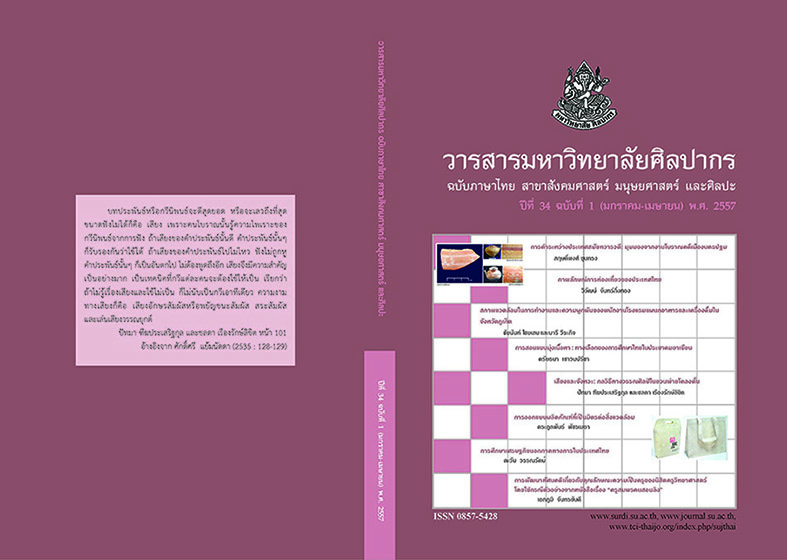เสียงและจังหวะ: กลวิธีทางวรรณศิลป์ในยวนพ่ายโคลงดั้น Sound and Rhythm: Literary Art Techniques in Yuan Phai Khlong Dan
Main Article Content
Abstract
บทคัดย่อ
บทความนี้มีวัตถุประสงค์เพื่อศึกษากลวิธีและผลจากการสร้างเสียงเสนาะและจังหวะของคำในยวนพ่ายโคลงดั้น ผลการศึกษาพบว่ากวีมีกลวิธีสร้างเสียงเสนาะตามข้อบังคับทางฉันทลักษณ์ ทั้งเรื่องสัมผัสนอกและการใช้คำเอกและคำโท ทำให้คำประพันธ์มีเสียงหลักที่ไพเราะ นอกจากนี้ยังเพิ่มความไพเราะด้วยการใช้สัมผัสในชนิดสัมผัสพยัญชนะอย่างหลากหลาย ส่วนจังหวะในยวนพ่ายโคลงดั้นเกิดจากการวางคำที่มีพยางค์สั้นยาว การซ้ำเสียง และการซ้ำคำ ทำให้เกิดจังหวะหนักเบา และเน้นย้ำทั้งเสียงและความหมายของคำและเนื้อความ เสียงและจังหวะจึงเป็นคุณลักษณะทางวรรณศิลป์ที่สำคัญประการหนึ่งในยวนพ่ายโคลงดั้นที่ช่วยสร้างความไพเราะให้บทประพันธ์ ช่วยสื่อความหมายให้ชัดเจน และเน้นย้ำสัมพันธภาพของวรรคหน้ากับวรรคหลัง และกับคำสร้อยในคำประพันธ์ประเภทโคลง
คำสำคัญ: 1. เสียง. 2. จังหวะ. 3.วรรณศิลป์. 4. ยวนพ่ายโคลงดั้น.
Abstract
This article aims to study the techniques and result from the creation of melodious sounds and rhythm of words in Yuan Phai Khlong Dan. It is suggested that the poet created harmonious sound in accordance with the rules of composing ra^ay and khlooN both on the external rhyme and the use of the first tone mark syllable (kham /e$ek) and the second tone mark syllable (kham thoo).The poet also increased melodies in his work through diversified internal consonant rhymes. In addition, the rhythms in Yuan Phai Khlong Dan are created by short and long syllable, repeated sounds, and repeated words. These cause heavy and light rhythms as well as highlight both the sounds and meaning of words and contents. The use of sounds and the creation of rhythms are important features of the literary art that create fine melodies in Yuan Phai Khlong Dan. Moreover, they also have important roles communicating a vivid meaning and stressing the relationship between the front hemistich (wa@k na^a) and the rear hemistich (wa@k la&ng), and between the rear hemistich and the decorative words or kham s^j.
Keywords: 1. Sound. 2. Rhythm. 3. Literary art. 4. Yuan Phai Khlong Dan.


